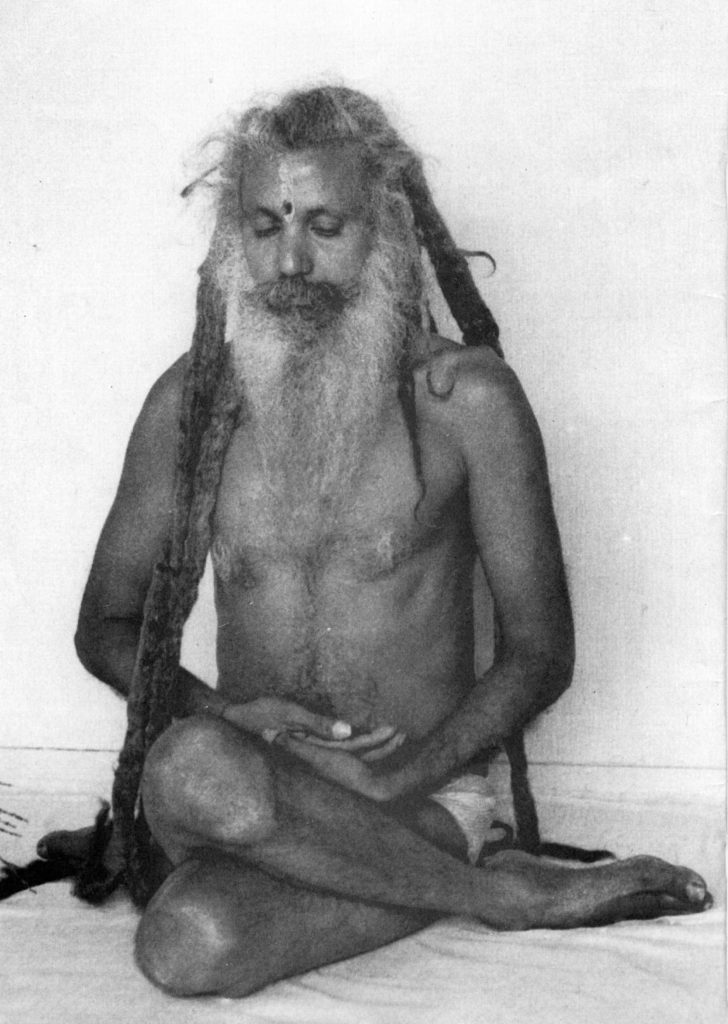Continue sharing practices that, in our opinion, they can be useful in this suspended period that sees many and many of us more static than usual. We asked for help from the mythological figure of pulley, then to that of king pigeon… and today we rely on the millennial wisdom of cattle: if there is, In fact, one thing we learned in India is “when you are in crisis, close up a bovine”!
Gomukāsn
The posture of the cow's face
“Sitting with your bust still, bring your feet flat on the ground to the sides of your back. This is the gomukha posture, which looks like a cow's muzzle. " GS: 2.16
"The Haṭhayoga-pradīpikā (I.20) states that the legs must be crossed in order to bring the right ankle against the left hip, and viceversa." [1]
This is a position that may not be accessible to everyone on the first try, but which can also be practiced with adaptations and in a partial way.
There are several ways to access it
From a sitting position with bent knees:
- sit on the ground with your knees flexed and the soles of your feet resting on the ground and separated more than the width of your hips;
- at this point pass a foot, imagine right, below the left knee to bring it to rest the heel outside the left gluteus;
- at this point do the same thing with your left foot, passing it over the right knee to bring the heel to the outside of the right buttock. [2]
- The final position will see us sitting with the buttocks on the ground in the space of the feet, the heels resting on the outside of the buttocks and the toes facing outwards to remind the ears of the cow.
From the sitting position with the legs stretched out:
We often use this mode when we approach gomukhāsana during the warm-up of the legs at the beginning of the lesson, inspired by the sequence of “pawanmuktasana 1 – antirheumatic group " [3]: this will start with the leg that passes over, aligning the two knees and bringing the heel outside the gluteus.
We can get there either from a static sitting position, both from the movement that we call "cradle" where a flexed leg is kept "like a baby" and swung on the frontal plane, first in a gentle way, then more vigorous towards the outside, to then be brought to the closure, placing the knee on that of the outstretched leg and the foot outside the buttock.
In this way the position also lends itself to be performed in partial form, that is, keeping the leg under extended, especially if the goal is to start working on this gesture of squeezing the pelvis.
From this half position it will be possible to switch to the complete position by slightly lifting the still free gluteus and flexing the stretched leg, bring the heel to the outside of the buttock.
Another way, useful for those with thick or stiff legs, could be to get into gomukhāsana from the quadrupedic position that we call "the cat": in this case you can bring one knee behind the other, keeping your feet well apart, and, with the help of your hands, bring the pelvis to the ground in the space between the feet.
Useful at this point press with both hands on the soles of the feet and lift the pelvis for some anterior movement – retro version and some lateral movement that we call "duck": in practice a swing to the right and left keeping the pelvis as soft as possible.
Whatever the gateway for gomukhāsana the challenge is to be able to stay in the ease: in case of inconvenience or fatigue, in addition to the possibility of practicing it partially, it may be useful to add a rise under the pelvis that allows a higher and more agile seat and less request for the knees.
The position lends itself to being kept static, with your hands on the soles of your feet or overlapping above the knee.
Not surprisingly in the tradition Satyananda, with different name, the position is indicated in the group of asana meditative as a valid alternative to other sitting positions, it is considered very beneficial due to the unusual position of the knees and which “affects the pelvic structure and lengthens the external muscles of the thighs instead of the internal ones […] and also massages and tones the pelvic and reproductive organs. " [4]
The position is often proposed with a variant of the arms that, somehow, completes the work in progress on the lower limbs.
However we like to propose it more in the form of kriya as it was sent to us by Walter Thirak Ruta according to the teachings received from Swamiji.
In this case it is a question of realizing the static position first with the upper body and then in flexion, bringing the least of the hands placed on the knee, staying in both positions for some time. The same gestures will be repeated with a different attitude of the arms (arms open laterally, arms stretched over the head with praying hands in rotation, praying hands behind your back ...) always keeping the static position first with the upper body straight and then in flexion, taking care not to lift the buttocks off the ground and not "spread" on the thighs-knees, but always keeping the back active and stretched and not indulging in moving work elsewhere. [5]
The position lends itself, Moreover, to perform column twists, to be made on both sides for each leg crossing.
Like all seated positions, the effect produced by the rooting of the pelvis on the ground, in this case also firmly squeezed, is to favor the thoracic opening and the lengthening of the spine, facilitated by the light traction that can be exercised by the intertwined hands on the knees.
What, in our opinion, this position gives, in such a static moment as what we are experiencing, it is a transformation of the lower back area, very deprived of the long hours spent sitting, as well as a prodigious squeezing of the legs, overcoming cramps and fighting the widespread phenomenon of "restless legs", as well as the aforementioned lengthening of the outer bands of the legs, connected with the MTC meridian of the biliary vesicle, very active right now (see in this regard the article dedicated to Spring according to TCM).
We like it because it brings peace, a profound peace as well as the breath that derives from it.
_______________________
[1] Stefano moats (edited by), Gheraṇḍa-Samhita (Teachings on Yoga), Magnanelli, Torino, 1994, p.49.
[2] note that from here, leaving the left foot resting on the ground near the right knee, we could go directly into a variant of Matsyendrāsana.
[3] Swami Satyananda Saraswati, Asana Pranayama Mudra e Bandha, tr. it. Satyananda Yoga School Edizioni Satyanananda Ashram Italy, Rimini, 2011, pp. 21-42.
[4] therein, p. 101
[5] For further information: Walter Thirak Ruta, God is happiness, Pramiti Editions, 2011, pp. 197-199


